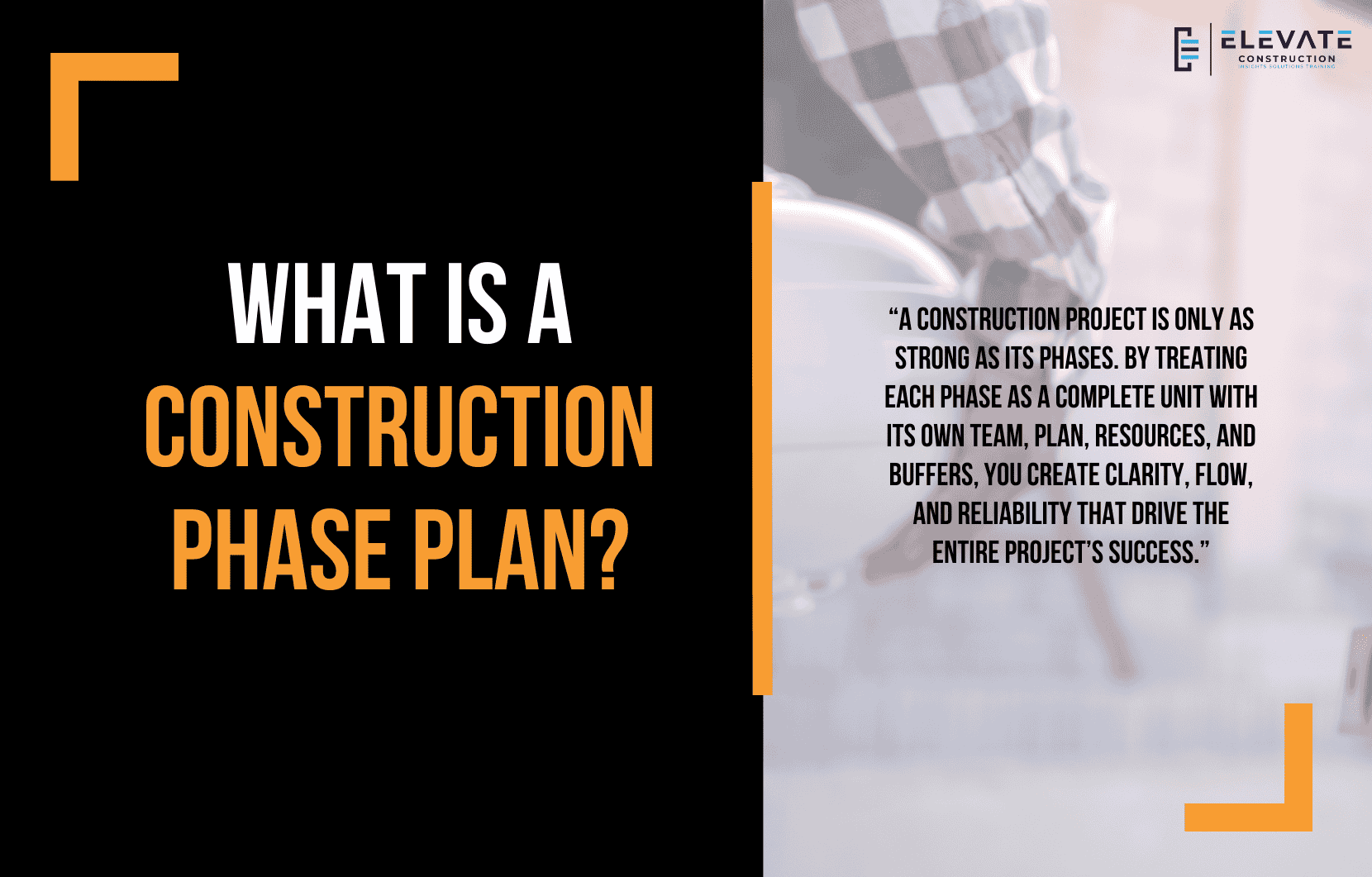What Is a Construction Phase Plan?
When we think of construction planning, most people picture one giant plan, one logistics plan, one org chart, one schedule, one everything. But in reality, the true core of a construction project is not the whole, it’s the phase.
A construction project is really just a collection of phases pieced together. If a takt or a takt wagon is the base unit for production calculations, then the phase is the base unit for all our planning.
This blog will break down why phases matter so much, how builders visualize them, and what you need in place to create a strong construction phase plan.
Construction Phases and Takt Wagons:
Imagine your project split into zones, and each zone made up of takt wagons (1, 2, 3, 4). When you draw this out, it creates a parallelogram.
- A longer parallelogram means the project is moving slower.
- A more vertical parallelogram means it’s moving faster.
This visualization is how we evaluate construction flow. The takt wagon gives us our production calculation base unit, while the phase gives us our planning base unit.
Sequence & Flow:
To know if you have the right phase plan, you first need the right sequence. This comes from your pull plan, the trades are sequenced and packaged there. Then, that sequence is compared zone by zone to check for flow.
A simple formula can help verify flow:
Takt Wagons + Takt Zones – 1 × Takt Time = Duration
At the end of every phase, don’t forget to check your buffers. Buffers protect against risk, and a good risk analysis should tell you how many buffer days you need.
Building the Base Framework:
Once your phase is defined, it becomes your framework. That framework leads into key activities:
- 3 months ahead → Perform your pull plan.
- 3 weeks ahead → Hold a preparatory (pre-con) meeting with trades.
- Supply chain alignment → Ensure materials are ready and buffered.
- During the phase → Look ahead 6 weeks and plan weekly work.
This cycle ensures every phase runs smoothly and predictably.
Projects = Phases
A project is nothing more than a combination of phases:
- Mobilization.
- Foundations.
- Superstructure.
- Interiors.
- Exteriors.
- Commissioning.
Each phase must be treated with the same rigor – team, plan, resources, environment, culture, and expectations just like the project itself.
Key Elements of a Strong Phase Plan:
A great phase plan includes:
- Team → Org chart, with the right superintendents or leads for that phase.
- Planning → Production plan, buffers, lookaheads, weekly work planning.
- Resources → Materials, equipment, and logistics ready to go.
- Environment → Proper site setup, safety, and open workspaces.
- Culture & Information → Clear communication, visuals, risk analysis, and trade alignment.
When all these are phase-specific not just project-wide your plan is solid.
Final Thoughts:
A good phase plan ensures everyone can:
- See as a group.
- Know as a group.
- Act as a group.
with total participation.
Key Takeaway:
A construction project is only as strong as its phases. By treating each phase as a complete unit with its own team, plan, resources, and buffers, you create clarity, flow, and reliability that drive the entire project’s success.
If you want to learn more we have:
-Takt Virtual Training: (Click here)
-Check out our Youtube channel for more info: (Click here)
-Listen to the Elevate Construction podcast: (Click here)
-Check out our training programs and certifications: (Click here)
-The Takt Book: (Click here)
Discover Jason’s Expertise:
Meet Jason Schroeder, the driving force behind Elevate Construction IST. As the company’s owner and principal consultant, he’s dedicated to taking construction to new heights. With a wealth of industry experience, he’s crafted the Field Engineer Boot Camp and Superintendent Boot Camp – intensive training programs engineered to cultivate top-tier leaders capable of steering their teams towards success. Jason’s vision? To expand his training initiatives across the nation, empowering construction firms to soar to unprecedented levels of excellence.
On we go

